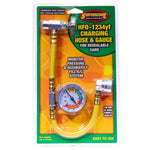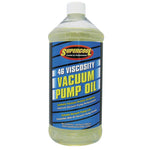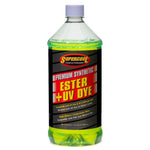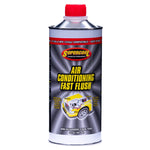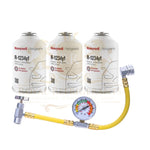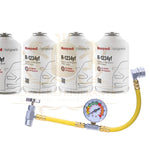You have no items in your shopping cart.
Everything You Need to Know About R-410A EQUIPMENT SECONDARY MARKET for HVAC and Automotive Applications
Here’s a comprehensive guide on the secondary market for R‑410A equipment (used or surplus HVAC gear designed for R-410A) covering why it exists, what to watch out for, how to participate, and the implications for both HVAC and automotive-adjacent cooling systems.
What is the R-410A equipment secondary market?
By “secondary market,” we mean used, surplus, refurbished, or otherwise non-new equipment designed to use R-410A (condensing units, air-handlers, mini-splits, rooftop units, chillers) being bought and sold after the primary distribution channel. This includes:
-
Surplus inventory from OEMs/distributors of unused R-410A equipment. HVAC School+3achrnews.com+3pacaire.com+3
-
Used/installed-base units being removed, refurbished and resold.
-
Repurposed systems in buildings, resale to smaller contractors, etc.
For example:
“The refrigerant transition is creating opportunities for companies that deal in surplus equipment … surplus R-410A equipment.” achrnews.com
Also note that in the U.S. the installed stock for R-410A is very high—about 85 % of the residential/light-commercial AC stock. Environmental Protection Agency+1
Why the secondary market is growing now
Several forces drive this trend:
-
Regulatory changes: Under the American Innovation and Manufacturing (AIM) Act and associated EPA rules, new equipment using R-410A is being phased out (or will be restricted) starting January 1, 2025 for many new installations. HVAC School+2Airlogix+2
-
Inventory overflow: OEMs/distributors wanting to clear stock of R-410A equipment (still usable) are selling surplus. “A distributor … will not be able to move if they tie up in R-410 product.” achrnews.com
-
Service/maintenance demand: Because many buildings already have R-410A systems installed and will continue to operate for years, there is demand for equipment and parts to service/repair these systems rather than immediate full replacement.
-
Cost pressures: New systems using next-gen refrigerants (lower-GWP types) tend to have higher prices or require new design, so contractors/building owners look to the secondary market to stretch budgets. achrnews.com+1
-

Key practical factors to consider in the secondary market
If you’re thinking about buying or selling R-410A equipment in the secondary market, especially for HVAC or automotive-adjacent cooling systems, here are the critical things to check:
-
Equipment compatibility and condition
-
Confirm the equipment is designed for R-410A (higher pressure, different components vs older refrigerants) — e.g., R-410A systems run much higher pressures than older systems. hvacrassets.net+1
-
Check how many hours it has been used, maintenance history, whether major components (compressor, heat-exchanger, controls) are still in good condition.
-
Ensure that parts (filters, coils, controls) remain serviceable — as time goes on, fewer new units will be made.
-
For automotive cooling systems: While R-410A is mainly used for HVAC/residential & commercial, if you’re looking at automotive-adjacent applications (e.g., large transport HVAC), make sure the equipment spec fits mobile or secondary market reuse.
-
-
Regulatory and refrigerant-service implications
-
Even if the equipment is second-hand, servicing it still may require certified technicians (depending on refrigerant rules) and access to refrigerant, parts, etc.
-
Because R-410A production and new equipment is being phased out, refrigerant supply, compressor replacements, or specialty parts may become more expensive or scarce. The equipment may become challenging to support. achrnews.com+1
-
Ensure the refrigerant charge is correct and there’s no contamination or illegal uses (mixing refrigerants is very problematic).
-
-
Economic lifecycle & risk vs benefit
-
Buying used/surplus may save upfront cost but may carry higher risk: shorter remaining lifespan, less future support, possibly higher maintenance costs.
-
This is more critical now because the industry is transitioning to lower-GWP refrigerants and new equipment may have higher upfront cost but longer future support. achrnews.com+1
-
Consider how long you plan to operate the equipment: if you expect to keep it 10+ years, future support risk becomes significant.
-
-
Warranty, liability & documentation
-
Make sure that any used equipment purchase includes clear documentation of what is included, condition, any remaining warranty (if applicable), and proper transfer of ownership.
-
Check that the original manufacturer still supports the model or parts. If the unit is very old or the manufacturer has discontinued the line, your risk is higher.
-
-
Installation site readiness
-
Ensure that the location (building/site) is compatible with the used equipment: correct electrical supply, duct/coil match, controls, refrigerant piping, etc.
-
For used R-410A equipment, you still need service tools rated for R-410A pressures, certified recovery gear, correct refrigerant handling.
-
Advantages & disadvantages of using R-410A equipment from the secondary market
✅ Advantages
-
Lower upfront cost: Secondary market often offers used/surplus at discounted price.
-
Immediate availability: With new equipment supply constrained and new refrigerant lines ramping up, there may be fewer new units immediately available.
-
Familiar technology: Technicians are very familiar with R-410A systems (design, service, controls), so less training curve.
-
Good lifespan if in good condition: Many R-410A systems still have many years to go.
❌ Disadvantages
-
Support risk: As newer refrigerants become standard, parts, refrigerant supply, and manufacturer support for legacy R-410A might diminish.
-
Regulatory phase-out pressures: New installations of R-410A may become restricted; resale value may decline faster.
-
Unknown history: Used equipment may have hidden wear or issues (e.g., compressor fatigue, corrosion) that are harder to detect.
-
Shorter leftover useful life: If the system has been used many years, you may only get limited remaining service life.
-
Retrofit and compliance risk: If regulations change (for example requiring leak detection systems or new refrigerants), your used R-410A system may face restrictions.
Specific considerations for HVAC vs automotive applications
-
HVAC (residential/commercial): R-410A is extremely common in the installed base. For example: “R-410A accounts for the majority (85 %) of the installed stock in residential/light commercial air-conditioning.” Environmental Protection Agency+1 So the secondary market for HVAC is large and active.
-
Automotive applications: R-410A is not typically used for standard vehicle air-conditioning systems (those use R-134a, R-1234yf, etc). Some larger transport or industrial mobile chillers may use R-410A but you must verify. So if you’re looking at automotive-adjacent equipment (transport trucks, mobile HVAC), check compatibility carefully. The general principle of secondary market applies, but the prevalence is much lower.
How to buy/sell used R-410A equipment – checklist
Here’s a rough “how-to” checklist when participating in the secondary market for R-410A equipment:
If you’re buying:
-
Identify exactly the model, specs, refrigerant type (R-410A), manufacture date, condition.
-
Verify installation history: operating hours, maintenance records, reason for being sold/surplus.
-
Confirm parts availability: compressor model, coils, controls, etc.
-
Confirm refrigerant charge is original, no cross-contamination, and system is clean.
-
Confirm the unit is compatible with your site: electrical, duct/piping connection, load match.
-
Negotiate warranty/return terms: Is there any guarantee? What happens if the unit fails early?
-
Factor in future support cost: refrigerant price trends, changes in regulation, potential obsolescence.
-
Plan for installation & commissioning: check that you have certified technicians, proper tools, and recovery equipment.
-
Document transfer clearly: what you’re buying, condition, components, any parts replaced, service history.
If you’re selling/disposing surplus:
-
Provide accurate specs and condition descriptions for transparency.
-
Provide any service records or past repair history if available.
-
Indicate how long the unit has been used and why you’re selling it (upgrade, retrofit, project cancelled).
-
Consider partnering with surplus/distribution companies that specialize in HVAC secondary market (as referenced in the article) to get better exposure. achrnews.com
-
Make sure legal compliance: if the equipment contains refrigerant, ensure proper handling, recovery, labeling.
What the future looks like & what this means for the secondary market
-
Because production of new R-410A equipment is being curtailed (from Jan 1 2025 for many new installations) and refrigerant supply will gradually become more constrained, the secondary market may remain active for years as existing installations are serviced. HVAC School+2Environmental Protection Agency+2
-
At the same time, prices for parts and refrigerant may rise: fewer new units means less competition, more reliance on used gear and parts. The article states: “Equipment prices keep rising as R-410A inventory decreases.” achrnews.com+1
-
For buyers: if you buy secondary market equipment now, it may offer good value — but you should also plan for the longer-term transition to lower-GWP refrigerants. If you hold on to used R-410A equipment long term, you may face higher service costs or eventual replacement.
-
For sellers: you may have an opportunity to monetize surplus equipment now before demand falls or obsolescence accelerates.
-
For service providers: there will be a continuing market in servicing existing R-410A units for many years, so used equipment, parts, and refurbished units will likely be part of business strategies.
Summary – Everything You Need to Know
-
The installed base of R-410A equipment is large (especially in residential/light commercial). Environmental Protection Agency+1
-
New installations of R-410A equipment are being phased out or restricted starting Jan 1 2025 in many cases. HVAC School
-
The secondary market for R-410A equipment (used/surplus) is growing and offers opportunities for cost savings and availability of units. achrnews.com
-
But there are risks: support life-cycle, parts availability, refrigerant servicing, regulatory changes, and unknown history of used units.
-
If you buy used R-410A equipment: do your homework, verify condition, compatibility, support. If you sell: document well, present clearly.
-
For automotive uses: R-410A secondary market is less prevalent (vehicle A/C uses other refrigerants) so ensure applicability.
-
In the transition landscape, secondary market may bridge the gap until full shift to lower-GWP refrigerants (e.g., R-32, R-454B) is established.
 English
English

